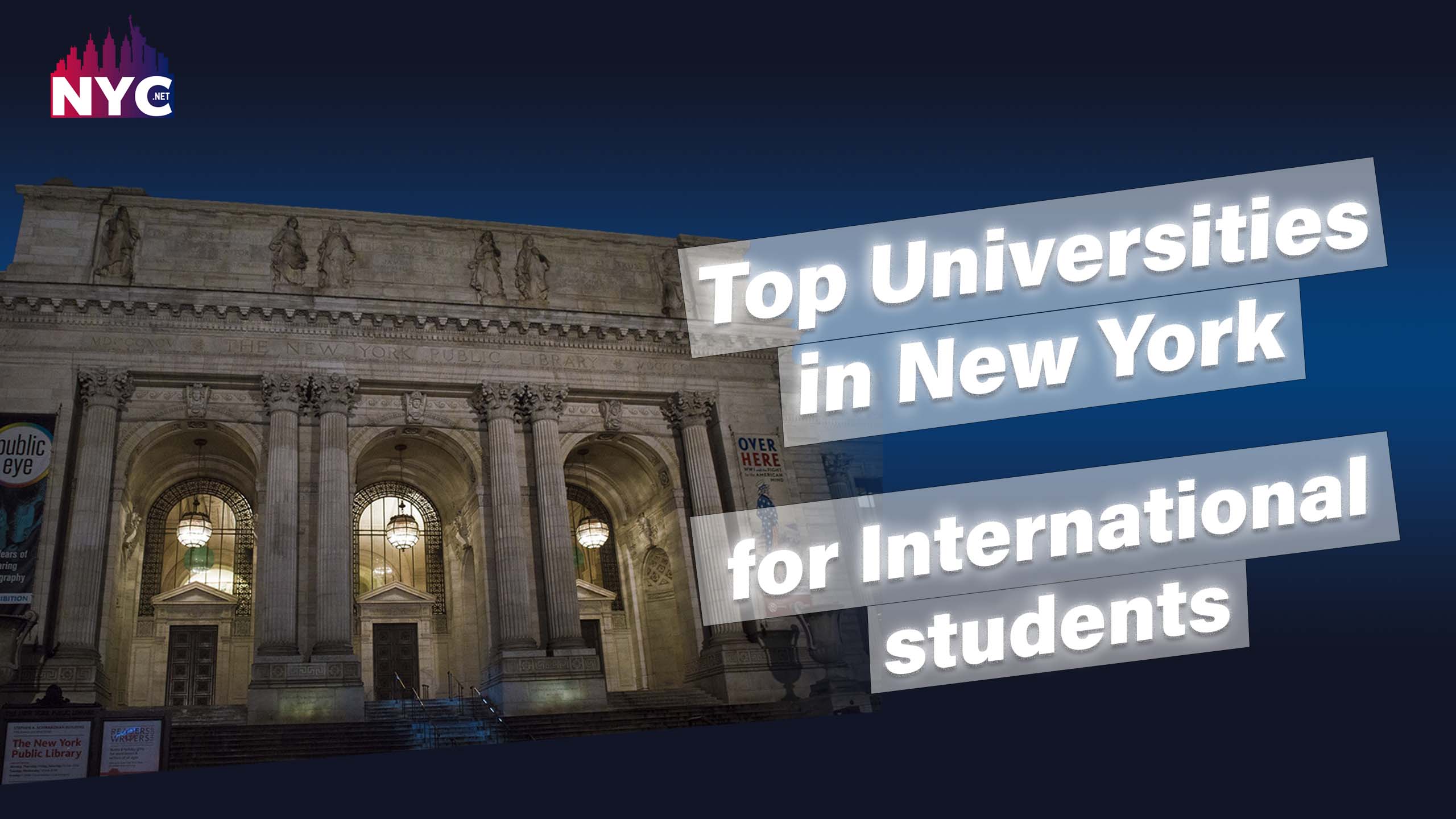
President Joe Biden recently announced student loan forgiveness, and the idea has elicited diverse reactions since its inception. While some say it is a wonderful choice that will benefit struggling students, especially given the recent increase in college tuition fees. Others believe that it is simply an extra burden on the common taxpayer and that students should be responsible for repaying their debt.
Let’s take a closer look at the problem! According to statistics, the overall cost of attendance at New York University, including tuition, fees, books and supplies, and living expenses, has climbed 29.86% from 2012 ($61,407), with current year expenditures of $79,746. The 2022 COA is 2.72% higher than last year. Undergraduate tuition and fees have risen from $43,204 (2012) to $56,500 (2022). Graduate school tuition and fees have risen from $36,820 in 2012 to $38,206 (2022). [1]

Students, on the other hand, have been suffering financially to make ends meet. According to statistics, unemployment in New York is twice as high as the national average! The city’s unemployment rate of 7.6% is among the worst among big cities. It is also lagging behind Northern New Jersey and Long Island. The Bronx has the highest non-seasonally adjusted unemployment rate of any of New York’s five boroughs, and it’s considerably worse for Black New Yorkers, who were disproportionately hit by job losses during the epidemic.
“New York’s economy is seeing a slower recovery because it is so reliant on the office and entertainment industries,” said Mark Vitner, a senior economist at Wells Fargo. “Cities that were quicker to reopen after the initial lock downs at the outset of the epidemic had greater recoveries.”
Due of the pandemic’s aftermath, low-income students and students of color are in in need of supports to help them through their college experience. “These discrepancies existed among Latinos prior to COVID-19.” “The pandemic has just made them more challenging to ignore,” said Hispanic Federation President Frankie Miranda. “We must focus on meeting our students’ urgent needs so that their college progress does not stagnate.” [2]
Who can benefit from the relief?
Despite the large number of students who are seeking this support, certain conditions must be satisfied in order for them to be eligible for debt relief. For individuals who qualify, up to 20,000 dollars in student loan forgiveness might be deducted from their accounts in the name of student loan forgiveness.
In addition to this probable cancellation, individuals who paid money back under the moratorium on student loan repayments imposed during the COVID-19 outbreak can obtain a reimbursement from the loan servicer.
Even if students are not qualify for student loan forgiveness, or if they still owe money after the debt is cancelled, they will not be required to make a payment until January 2023. Some people will have their student loan debt forgiven immediately without having to do anything, but the vast majority will have to apply. Under President Joe Biden’s plan, the Department of Education will forgive up to $10,000 in federal student loan debt for individual borrowers earning less than $125,000 per year or less than $250,000 for married borrowers or heads of families. Individuals who earned federal Pell Grants while in college may be entitled for an extra $10,000 in compensation. If the Department of Education does not have income information, their debt will be immediately cancelled, and no application will be required. Those who have previously given the information must fill out a new application from the Biden administration in order to provide the information the department need to cancel their debt.
Bharat Ramamurti, Deputy Director of the National Economic Council, stated at a news conference on August 26 that the application for student debt forgiveness will be available in early October.
He also stated that debtors might anticipate relief “within four to six weeks” after submitting their applications.
“Borrowers are encouraged to apply by November 15 in order to obtain relief before the payment moratorium expires on December 31,” Ramamurti stated.
Despite the fact that the plan was welcomed by many, particularly New Yorkers, due to high unemployment and rising living costs, many have opposed the relief, stating it is an extra burden on taxpayers.
According to studies, student loan forgiveness may cost average taxpayer $2,500.
Critics claim, taxpayers would ultimately foot the price, which is estimated to be in the hundreds of billions of dollars. According to calculations by the National Taxpayers Union, a fiscally conservative advocacy group, this may result in an average burden of $2,500 per taxpayer.
“Right now, there’s a transfer of wealth from society as a whole to those who borrowed to go to college,” said Andrew Lautz, director of federal policy for the National Taxpayers Union. “That has implications for customers,” Lautz added. “It has ramifications for taxpayers.”
This does not imply that people will instantly face a $2,500 tax increase. However, the $400 billion-plus cost of Biden’s student loan forgiveness plan will add to the government’s debt. The projected cost per taxpayer assumes that policymakers will need to make up for the whole amount of forgiveness through tax hikes, budget cuts, borrowing, or a combination of these options.
The assessment of the National Taxpayers Union is based on a total debt cancellation cost of more than $400 billion divided by the entire number of US taxpayers, 158 million.
According to the National Taxpayers Union, the expenses would not be distributed equitably across the income spectrum. Low-income taxpayers earning less than $50,000 would face an extra expense of $190 per person. This would rise to around $1,040 for people with adjusted gross earnings of $50,000 to $75,000, $1,774 for those with incomes of $75,000 to $100,000, and $3,791 for those with incomes of $100,000 to $200,000. Taxpayers earning between $200,000 and $500,000 would face an increased expense of $11,940 on average.
Another critique of the president’s plan is that it does not benefit Americans who did not attend college, who earn less throughout their careers than those who did.
According to the Social Security Administration, men with bachelor’s degrees earn almost $900,000 more than their high school graduate peers in median lifetime earnings. Women with bachelor’s degrees earn $630,000 more than their high school peers throughout the course of their lives.
There have also been concerns that student loan forgiveness is simply “shifting one type of borrowing to another.” While the measure may relieve millions of student loan debtors of their debt, it also implies that the government will borrow on their behalf to pay for it.
According to the Committee for a Responsible Federal Budget, Biden’s massive debt forgiveness will cost between $330 billion and $390 billion. According to the impartial group, the total proposal will cost between $440 billion and $600 billion over the next ten years, with a core estimate of around $500 billion.
Furthermore, it has been said that the president’s plan fails to address the underlying costs of college for future students. The Center for a Responsible Budget predicts that student debt will return to its present level of $1.6 trillion within five years.
In a study of the statement, the nonprofit group stated, “We estimate that cancellation will reduce $550 billion in federal student loan debt. However, we anticipate that the total outstanding federal student loan debt will rebound to $1.6 trillion (its present level) within five years.”
Taxes on Student Loan Forgiveness
Despite the fact that forgiven debt has to be taxed according to the law, it will be explicitly excluded from state taxes in New York under a new measure proposed in the state Legislature.
While the state Department of Taxation and Finance has stated that it has no intentions to tax the assistance, lawmakers have stated that they want to make that pledge a state law.
“New York State should not benefit from the plight of poor and middle-income student debtors,” said Sen. Brad Holyman, D-Manhattan. “Student loan debt is suffocating a whole generation of students, and New York must play a role in addressing this debilitating catastrophe.”
Hoylman filed the measure alongside Senate Deputy Leader Michael Gianaris and Sen. Kevin Thomas after President Biden revealed his intention to eliminate student loan debt for borrowers earning less than $125,000 per year. The legislation is known as the “Tax-Free Debt Forgiveness Act.”
The US Department of Education will alleviate $20,000 for Pell Grant recipients and $10,000 for those who did not, although the forgiven sum is still tax-eligible income in six states.
Though prior to 2021, the Internal Revenue Code recognized debt relief as taxable income and conventional taxation practice, the American Rescue Plan Act of March 2021 prohibited student loan forgiveness from being taxed as federal taxable income from 2021 to 2025.
The ARPA can be incorporated into state tax bases, although it is not required. Arkansas, California, Indiana, Minnesota, Mississippi, North Carolina, and Wisconsin are fully utilizing their tax-free status for canceled student loan debt.
Political Tension
Student debt reduction has also caused some political strife among Republicans and Democrats alike.
Democratic Congressman Chris Pappas of New Hampshire expressed alarm about the rising expense of higher education.
“President Biden’s declaration is not a policy announcement, and it sidesteps Congress and our oversight and fiscal obligations,” Pappas said in a statement. “Any strategy to alleviate student debt should go through the legislative process and be more focused and paid for in order to avoid adding to the deficit. The president’s plan also fails to address the fundamental issue of higher education affordability, and it is apparent that the high cost continues to limit students’ options.”
On Monday, over two dozen Republican governors wrote to President Biden to voice their worry about how his student debt bailout proposal, which is expected to cost taxpayers $500 billion, could harm lower-income families.
The letter, led by Iowa Gov. Kim Reynolds and signed by 22 Republican governors in total, criticized Biden’s plan for “punishing the poor” and shifting the “weight of debt from the wealthiest to working Americans.”
“As governors, we support making higher education more affordable and accessible for students in our states,” the governors stated. “However, we fundamentally oppose your plan to force American taxpayers to pay off the student loan debt of an elite few – a plan that is estimated to cost the American taxpayer more than $2,000 each or $600 billion total, a price the people of our states cannot afford.”
“Despite the fact that only 16-17 percent of Americans have federal student loan debt, your plan will compel their obligations to be transferred and paid by the great majority of taxpayers,” the governors said. “Transferring debt burdens from the wealthiest to working Americans has a regressive effect that disadvantages lower-income households. Borrowers with the biggest debt, $50,000 or more, virtually always have graduate degrees, implying that hourly employees will pay off the master’s and doctoral degrees of high-paid attorneys, physicians, and professors.”
The Republican governors emphasized that the decision for Americans to take out student loans was “their decision,” and that individuals who elected not to take out loans in return for college courses “should not be made to pay for the student debts of others.”
The Republican governors also cautioned Biden that forgiving student loan debt for millions of Americans at the expense of taxpayers would “promote more student borrowing, incentivize higher tuition rates, and drive up inflation even further, severely hurting every American.”
The governors maintained that Biden lacked “the ability to use unilateral action to bring in a wide student debt cancellation program,” referring to 2021 statements by House Speaker Nancy Pelosi that said the president “does not have that capacity” to remove student loan debt.
The Future?
President Joe Biden’s announcement of student loan forgiveness has sparked much debate. Despite criticism from economists and political officials from both the Republican Party as well as a few Democrats, the White House has maintained a hard posture in support of its student loan forgiveness program. There is much dispute on whether student loan forgiveness is a blessing or a burden, and it remains to be seen if the student loan forgiveness act will be implemented on time or delayed and how the aftermath of it will play out.
-
- ˄How New York University’s Tuition Changes. (n.d.).
From College Tuition Compare
- ˄How New York University’s Tuition Changes. (n.d.).
-
- ˄Alicia Diaz, A. T. (22, March 21). Why is New York City’s Unemployment Rate So High?
From Bloomberg
- ˄Alicia Diaz, A. T. (22, March 21). Why is New York City’s Unemployment Rate So High?



